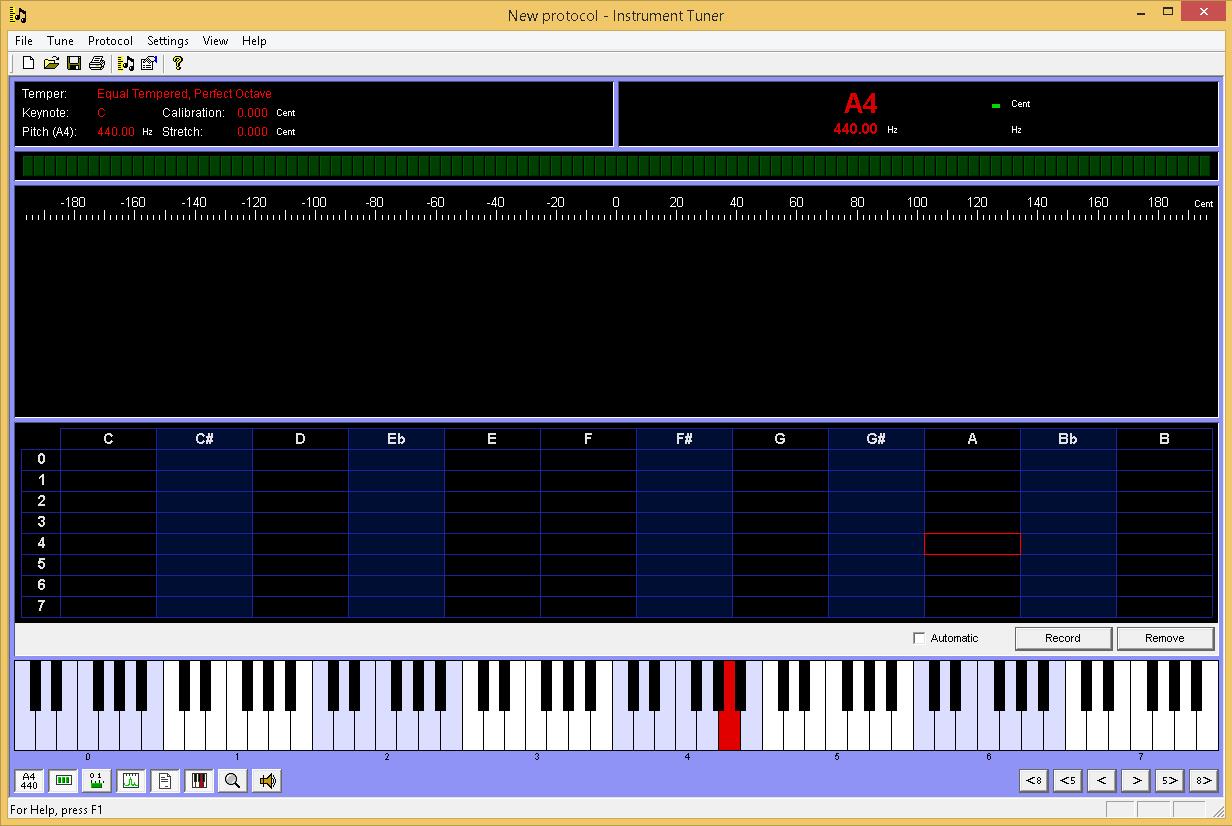
If the tuner is to be precise, it must separate the overtones. This is what makes an instrument’s sound unique.īecause of this, a guitar’s sound is distinct from that of a violin or other musical instrument. It is also known as “overtone” because of the additional frequencies produced. The fundamental is the lowest frequency and provides a description of the pitch of the note. If you are tuning, the display can also show you the nearest relative note in addition to E, A, D, G, B, and E notes. This data is processed, converted to its current pitch, and displayed on a display. The signal is detected, and the frequency of the signal is determined by using pitch detection in a guitar tuner. The Kilohertz (kHz) unit can be used to calculate frequencies over 1000 Hz. A keyboard’s middle C frequency is 262Hz, and the A frequency is 440Hz. The frequency of a note is measured in Hertz (Hz), which is the number of completed sound waves per second. This image is visually displayed in comparison to the closest relative note of the chromatic scale ( chromatic tuners).
#INSTRUMENT TUNER IMAGES SERIES#
To estimate an average, a Tuner analyzes a series of sound waves. To convert the signal to digital, an amplifier is used. No matter what type of tuner you use, they all work on the same basic principle: they measure the vibration of the strings and use that information to tune the instrument.Ī sensor, microphone, or instrument cable can all be used to detect a signal by tuning your guitar. These devices are typically more accurate than electronic tuners, but they can be more expensive. There are also mechanical tuners that use a physical mechanism to measure the vibrations of the strings.

The tuner can then be used to adjust the tuning of the instrument. The signal is then processed by a computer and displayed on a screen. These devices use a microphone to pick up the vibrations of the strings and convert them into an electrical signal. The most common type of tuner is the electronic tuner. There are many different types of tuners on the market, but they all work on the same basic principle: they measure the vibration of the strings and use that information to tune the instrument.


With Pure Tone, you know you'll always be hitting the right notes at affordable prices.Guitar tuners have been around for centuries, but only recently have they become widely available to the public. The Pure Tone Clip-On Tuner allows you to tune up, regardless of where you are, and without needing a lot of lighting. It's also small and light so you can even leave it on your instrument's headstock, meaning you'll never forget to take it with you to a gig or rehearsal. With a swivel-tilt function that can freely rotate up to 360 degrees, the Clip-On Tuner is always visible, helping you to sound great. The bright and easy-to-read LED screen will tell you in an instant how far away you are from reaching the required note (with the digital needle), while the note indicator will let you know which note you are currently playing. The Pure Tone Clip-On Tuner quickly attaches to your instrument's headstock and, by picking up the vibrations through its body, tells you whether you're on pitch, or sharp or flat. With the Pure Tone Clip-On Tuner you can always be sure you're hitting the right note.


 0 kommentar(er)
0 kommentar(er)
